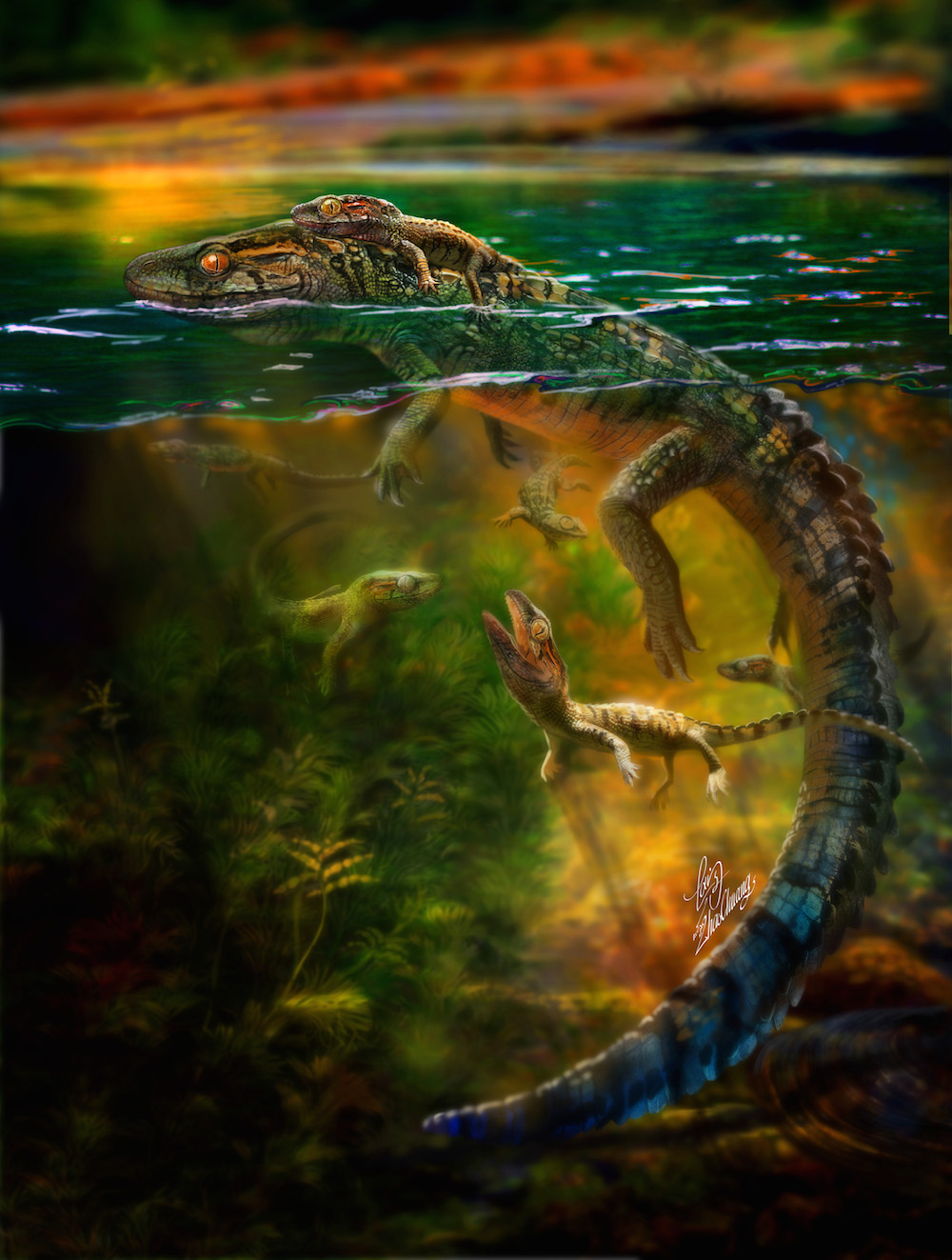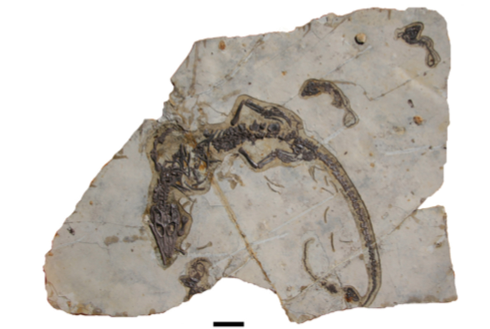Aww! Primordial Reptile Fossils Show Mother Caring for Babies

The fossilized remains of a small aquatic reptile surrounded by six babies suggest that the extinct animal was caring for the little ones when they died, a new study finds.
The reptile is an extinct species called the philydrosaurus, and likely lived during the Early Cretaceous, a time period that spans about 145 to about 100 million years ago. An anonymous farmer donated the "beautifully preserved skeletons" to the Jinzhou Museum of Paleontology in northeastern China in 2010, the scientists added.
The adult in the group is roughly four times the size of the smaller ones, which appear to be juveniles of the same species. All of the young are similar in size, so it's likely that they were born in a clutch at the same time, the researchers said. [The 7 Weirdest Moms in the Animal Kingdom]
Given that all of these animals died within a tail's length of one another, it's likely that the adult was caring for the young, they said.
"Although it is possible that the individuals were all swept together during or soon after the event that killed them, it is [felt] that this specimen more likely represents an instance of postnatal parental care," the researchers wrote in the study.
Parental care is seen in other animals, including crocodiles and birds, which lived during the time of the dinosaurs. For instance, crocodiles defend their young from predators, and birds protect and feed their young, the researchers said.

It's rare, but not unheard of, to find fossilized evidence of parental care among ancient animals. Researchers have found other instances of parental care among the dinosaurs Psittacosaurusand Oryctodromeus, as well as in the varanopid "pelycosaur," an ancient reptile that looked like a modern monitor lizard.
Sign up for the Live Science daily newsletter now
Get the world’s most fascinating discoveries delivered straight to your inbox.
In fact, "caring" behavior likely evolved multiple times in vertebrates, the researchers said. In this case, the adult is likely the mother, according to an analysis of the creature's anatomy, the researchers said.
"That philydrosaurus shows parental care of the young after hatching suggests protection by the adult, presumably against predators," the researchers wrote in the study."Their relatively small size would have meant that [they] were probably exposed to high predation pressure and strategies, such as live birth, and postnatal parental care may have improved survival of the offspring."
The study was published Oct. 20, 2014, in Geosciences Journal.
Follow Laura Geggel on Twitter @LauraGeggel. Follow Live Science @livescience, Facebook & Google+. Original article on Live Science.

Laura is the archaeology and Life's Little Mysteries editor at Live Science. She also reports on general science, including paleontology. Her work has appeared in The New York Times, Scholastic, Popular Science and Spectrum, a site on autism research. She has won multiple awards from the Society of Professional Journalists and the Washington Newspaper Publishers Association for her reporting at a weekly newspaper near Seattle. Laura holds a bachelor's degree in English literature and psychology from Washington University in St. Louis and a master's degree in science writing from NYU.









